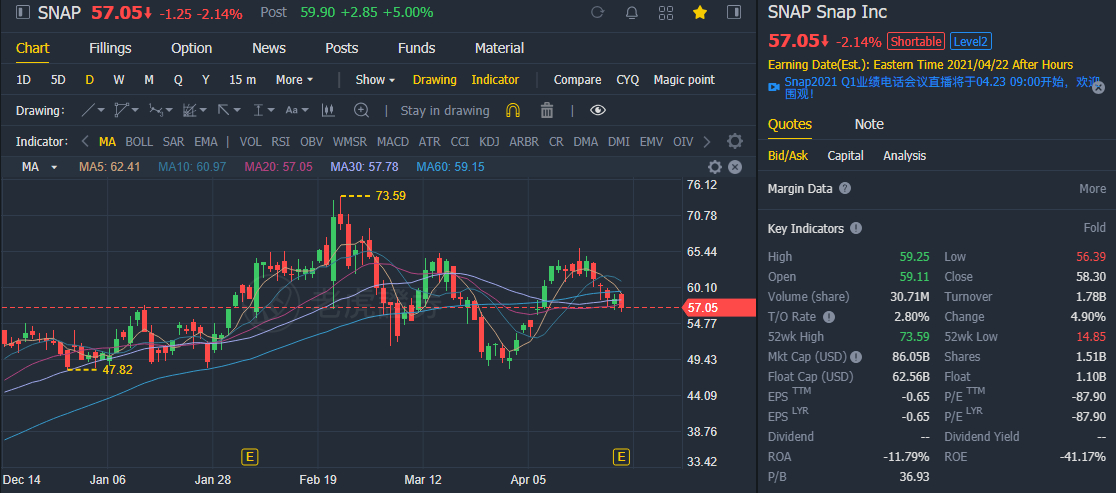April 22 (Reuters) - Snap Inc on Thursday beat Wall Street estimates for user growth and revenue as the improved Android version of its popular messaging app Snapchat attracted more users, but growth slowed within North America.
Shares of Snap rose 5% in trading after the bell.
Daily active users (DAUs), a metric closely watched by investors and advertisers, rose 22% year-over-year to 280 million in the first quarter. Analysts had expected 275.3 million, according to IBES data from Refinitiv.
Most of the user growth came from outside the United States and Canada, where Snap earns much of its revenue.
North American DAU grew 1 million from the previous quarter to 93 million.
Snap embarked on rebuilding its Android app, which struggled with technical bugs, back in 2018. Snapchat's Android user base now exceeds those on Apple iOS for the first time, the company said.
As more people downloaded the new app outside the United States, where Android phones dominate over iPhones, Snap added support for more languages and added more media content geared toward audiences in certain countries.
It launched an original show called "Phone Swap India" in March on the Discover section of Snapchat, which houses original content and shows from media partners.
Revenue, which Snap generates mainly from advertising, grew 66% to $770 million in the quarter ended March 31, beating Wall Street's consensus estimate of $743 million.
Snap has increasingly invested in augmented reality technology, betting that it can help brands market products like clothes and makeup to tech-savvy young users.
In March, Snap acquired Fit Analytics, a tech company that helps customers virtually determine if clothing will fit.
"Augmented reality remains one of our biggest opportunities as we look to the future," said Snap Chief Executive Evan Spiegel, in prepared remarks released before an earnings call with analysts.
Snap's net loss narrowed to $286.9 million, or 19 cents per share, from $305.9 million, or 21 cents per share, a year earlier.
(Reporting by Sheila Dang; Editing by Lisa Shumaker)

Comments